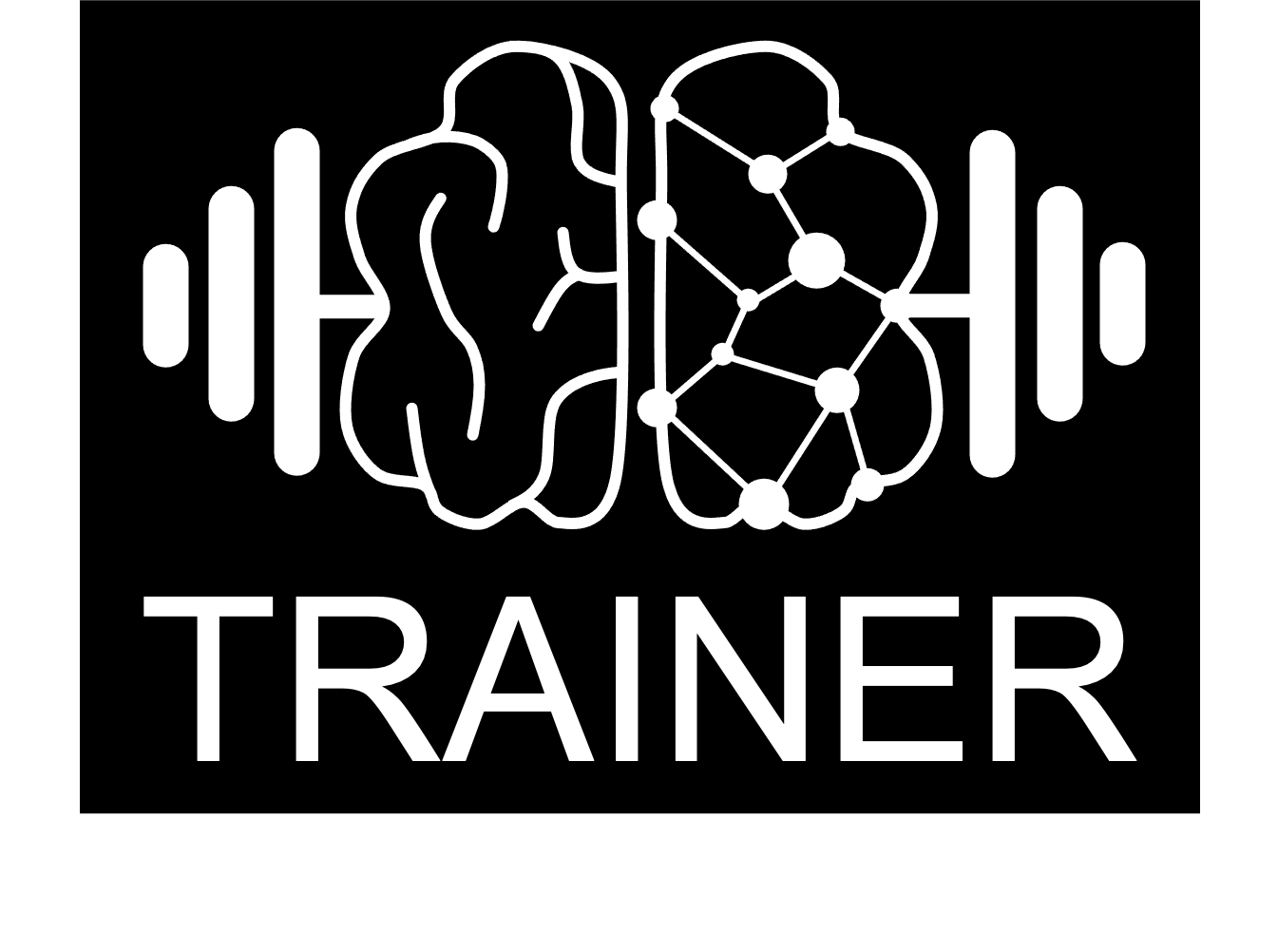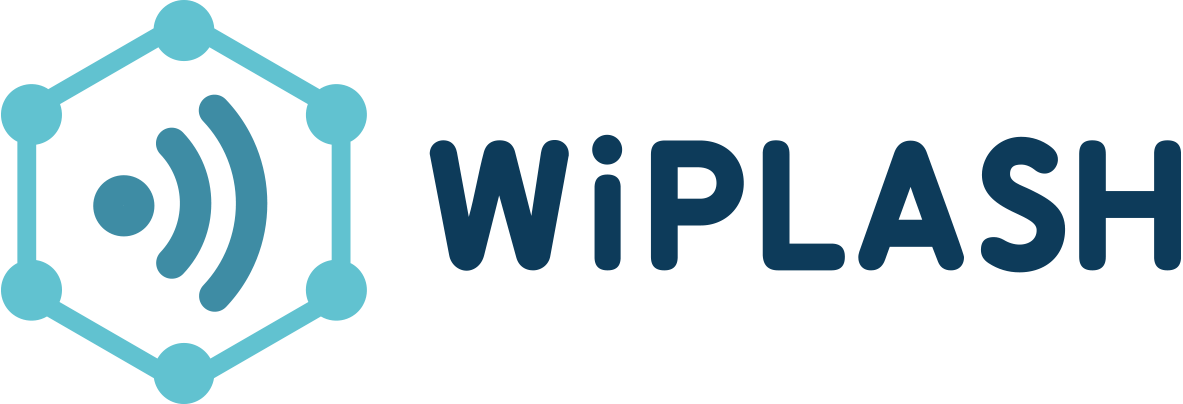CBA Website Archive (Until 2023)
Contact Webmaster
Current Projects
-
Description
 The huge effort of several worldwide R&D public and private initiatives towards the design of 5G networks and systems carried out in the
last few years is significantly contributing to the digital transformation of economy and society. Currently, network operators are
provisioning initial 5G services and continuing the long process of network evolution for future advanced 5G services. However, the digital
transformation increased demands on the network side as well as its increased capacity. Moreover, the upcoming 6G services will
dramatically increase requirements on many network Key Performance Indicators versus 5G, such as peak data rates, latencies and with
ultra-high reliability.
5G and beyond networks have to support a combination of several types of workloads stemming from a variety of use cases/verticals.
These workloads can come and go and may even change dynamically during services lifetime. As a result, the derived requirement from
the networks may change often and these changes may be significant. Therefore, the networks must constantly adapt to and anticipate
changes, increasing thus dramatically the network complexity. The observation that certain trends in network behavior can be predicted
and actions taken in anticipation, leads to the introduction of AI/ML. Actually there is huge potential for Artificial Intelligence (AI) to improve
management and performance of Beyond 5G networks which are expected to be developed in the years to come. Indeed, AI/ML technologies offer the potential to efficiently address
the challenges of complex 5G and beyond networks.
Leveraging on the wide expertise of two multi-disciplinary research groups, The TRAINER project ambitiously aims at architecting and
validating a converged an AI/ML empowered end-to-end network sustainable infrastructure towards the full deployment of beyond 5G
networks towards 6G. In particular, the TRAINER solution will encompass different network segments (Core, optical Metro/Access, Mobile
Edge Computing (MEC) servers/central data centers and 5G-RAN), different network technologies and business roles. The ambitious
innovation that TRAINER will bring reside on the concept of having AI/ML distributed at all levels of the future networks, including AI/MLenabled
end-to-end service orchestration, cognitive network management in SDN/NFV, LISP and RINA technology domains and even at
optical data plane level for quality of transmission assurance and signal processing.
The huge effort of several worldwide R&D public and private initiatives towards the design of 5G networks and systems carried out in the
last few years is significantly contributing to the digital transformation of economy and society. Currently, network operators are
provisioning initial 5G services and continuing the long process of network evolution for future advanced 5G services. However, the digital
transformation increased demands on the network side as well as its increased capacity. Moreover, the upcoming 6G services will
dramatically increase requirements on many network Key Performance Indicators versus 5G, such as peak data rates, latencies and with
ultra-high reliability.
5G and beyond networks have to support a combination of several types of workloads stemming from a variety of use cases/verticals.
These workloads can come and go and may even change dynamically during services lifetime. As a result, the derived requirement from
the networks may change often and these changes may be significant. Therefore, the networks must constantly adapt to and anticipate
changes, increasing thus dramatically the network complexity. The observation that certain trends in network behavior can be predicted
and actions taken in anticipation, leads to the introduction of AI/ML. Actually there is huge potential for Artificial Intelligence (AI) to improve
management and performance of Beyond 5G networks which are expected to be developed in the years to come. Indeed, AI/ML technologies offer the potential to efficiently address
the challenges of complex 5G and beyond networks.
Leveraging on the wide expertise of two multi-disciplinary research groups, The TRAINER project ambitiously aims at architecting and
validating a converged an AI/ML empowered end-to-end network sustainable infrastructure towards the full deployment of beyond 5G
networks towards 6G. In particular, the TRAINER solution will encompass different network segments (Core, optical Metro/Access, Mobile
Edge Computing (MEC) servers/central data centers and 5G-RAN), different network technologies and business roles. The ambitious
innovation that TRAINER will bring reside on the concept of having AI/ML distributed at all levels of the future networks, including AI/MLenabled
end-to-end service orchestration, cognitive network management in SDN/NFV, LISP and RINA technology domains and even at
optical data plane level for quality of transmission assurance and signal processing.
Duration
2021-2023
Contract number
PID2020-118011GB-C21
-
Description
 Graph Neural Networks (GNN) have been recently proposed to learn, model and generalize over graph structured data. Computer Networks are fundamentally graphs, and many of its relevant characteristics -such as topology and routing- are represented as graph-structured data. In this context, GNN are a central tool to apply ML techniques to Computer Networks. GNN can learn the relationship of complex network characteristics and build relevant models that can be useful to plan and manage the network. In addition and in combination with Deep-Reinforcement Learning (DRL) techniques, GNN can help developing autonomous network optimization mechanisms that result in unprecedented performance, achieving the ultimate vision of self-driving networks.
The Barcelona Neural Networking Center (BNN-UPC) has been created as an initiative of Prof. Albert Cabellos and Prof. Pere Barlet at UPC (Universitat Politècnica de Catalunya) with the main goals of carrying fundamental research in the field of Graph Neural Network applied to Computer Networks, and educating and training the new generation of students.
Graph Neural Networks (GNN) have been recently proposed to learn, model and generalize over graph structured data. Computer Networks are fundamentally graphs, and many of its relevant characteristics -such as topology and routing- are represented as graph-structured data. In this context, GNN are a central tool to apply ML techniques to Computer Networks. GNN can learn the relationship of complex network characteristics and build relevant models that can be useful to plan and manage the network. In addition and in combination with Deep-Reinforcement Learning (DRL) techniques, GNN can help developing autonomous network optimization mechanisms that result in unprecedented performance, achieving the ultimate vision of self-driving networks.
The Barcelona Neural Networking Center (BNN-UPC) has been created as an initiative of Prof. Albert Cabellos and Prof. Pere Barlet at UPC (Universitat Politècnica de Catalunya) with the main goals of carrying fundamental research in the field of Graph Neural Network applied to Computer Networks, and educating and training the new generation of students.
Duration
2020 -
More Info
Project Website: https://bnn.upc.edu/
-
Description
 The main design principles in computer architecture have shifted from a monolithic scaling-driven approach towards an emergence of heterogeneous architectures that tightly co-integrate multiple specialized computing and memory units. This is motivated by the urgent need of very high parallelism and by energy constraints. This heterogeneous hardware specialization requires interconnection mechanisms that integrate the architecture. State-of-the-art approaches are 3D stacking and 2.D architectures complemented with a Network-on-Chip (NoC) to interconnect the components. However, such interconnects are fundamentally monolithic and rigid, and are unable to provide the efficiency and architectural flexibility required by current and future key ICT applications. The main challenge is to introduce diversification and specialization in heterogeneous processor architectures while ensuring their generality and scalability.
In order to achieve this, the WiPLASH project aims to pioneer an on-chip wireless communication plane able to provide architectural plasticity, reconfigurability and adaptation to the application requirements with near-ASIC efficiency but without any loss of generality. For this, the WiPLASH consortium will provide solid experimental foundations of the key enablers of on-chip wireless communication at the functional unit level as well as their technological and architectural integration. The main goals are: (i) prototype a miniaturized and tunable graphene antenna in the terahertz band, (ii) co-integrate graphene RF components with submillimeter-wave transceivers and (iii) demonstrate low-power reconfigurable wireless chip-scale networks. The culminating goal is to demonstrate that the wireless plane offers the plasticity required by future computing platforms by improving at least one key application (mainly biologically-plausible deep learning architectures) by 10X in terms of execution speed and energy-delay product over a state-of-the-art baseline.
The main design principles in computer architecture have shifted from a monolithic scaling-driven approach towards an emergence of heterogeneous architectures that tightly co-integrate multiple specialized computing and memory units. This is motivated by the urgent need of very high parallelism and by energy constraints. This heterogeneous hardware specialization requires interconnection mechanisms that integrate the architecture. State-of-the-art approaches are 3D stacking and 2.D architectures complemented with a Network-on-Chip (NoC) to interconnect the components. However, such interconnects are fundamentally monolithic and rigid, and are unable to provide the efficiency and architectural flexibility required by current and future key ICT applications. The main challenge is to introduce diversification and specialization in heterogeneous processor architectures while ensuring their generality and scalability.
In order to achieve this, the WiPLASH project aims to pioneer an on-chip wireless communication plane able to provide architectural plasticity, reconfigurability and adaptation to the application requirements with near-ASIC efficiency but without any loss of generality. For this, the WiPLASH consortium will provide solid experimental foundations of the key enablers of on-chip wireless communication at the functional unit level as well as their technological and architectural integration. The main goals are: (i) prototype a miniaturized and tunable graphene antenna in the terahertz band, (ii) co-integrate graphene RF components with submillimeter-wave transceivers and (iii) demonstrate low-power reconfigurable wireless chip-scale networks. The culminating goal is to demonstrate that the wireless plane offers the plasticity required by future computing platforms by improving at least one key application (mainly biologically-plausible deep learning architectures) by 10X in terms of execution speed and energy-delay product over a state-of-the-art baseline.Duration
36
Participants
UNIVERSITAT POLITECNICA DE CATALUNYA, IBM RESEARCH GMBH, ALMA MATER STUDIORUM - UNIVERSITA DI BOLOGNA, ECOLE POLYTECHNIQUE FEDERALE DE LAUSANNE, GESELLSCHAFT FUR ANGEWANDTE MIKRO UND OPTOELEKTRONIK MIT BESCHRANKTERHAFTUNG AMO GMBH, UNIVERSITAET SIEGEN, RHEINISCH-WESTFAELISCHE TECHNISCHE HOCHSCHULE AACHEN
Contract number
H2020-EU.1.2.1 863337
More Info
Project Website: http://www.n3cat.upc.edu/projects/wiplash
Overall budget: € 2 994 765
-
Description
 Leaving the current 4th generation of mobile communications behind, 5G will represent a disruptive paradigm shift integrating 5G Radio
Access Networks (RANs), ultra-high capacity access/metro/core optical networks and intra-datacenter network and computational
resources into a single converged 5G network infrastructure. Thanks to an extensive deployment of network virtualization techniques
leveraged by Software-Defined Networking (SDN) and Network Function Virtualization (NFV) technologies, such a 5G network
infrastructure will have to be capable of inter-connecting anything (people, things, processes, contents, etc.) anywhere, no matter the
geographic location, and over a set of network services truly meeting their diverse communication requirements (e.g., in terms of
bandwidth, latency, reliability, etc.). Furthermore, these network services will have to be orchestrated end-to-end over several network and
IT resource segments with high scalability, dynamicity and reactivity upon unexpected traffic and resource state changes, all this in an
energy-efficient fashion. The present coordinated project proposal ALLIANCE ambitiously aims at architecting, from top to bottom, a
converged 5G-enabled network infrastructure satisfying those needs to effectively realize the envisioned upcoming Digital Society. Joining
the long expertise of two multidisciplinary research teams, ALLIANCE will investigate the appropriateness of several networking solutions
for 5G, such as SDN/NFV on top of an ultra-high capacity spatially and spectrally flexible all-optical network infrastructure, or the
OpenOverlayRouter (OOR) and the clean-slate Recursive Inter-Network Architecture (RINA) over packet networks, including access,
metro, core and datacentre networks. Evaluation activities will not only consist of theoretical and simulation-based results, but also
experimental activities over representative network test-beds implementing the aforementioned networking solutions for 5G, as a way to
completely assess their performance in real network scenarios. ALLIANCE relies on cognitive QoE-driven management and orchestration,
which optimises level service quality without network resource over-provisioning. In particular, an ambitious goal of the ALLIANCE
proposal is to design and implement a Knowledge-Defined Networking (KDN)-based orchestration layer, implementing Deep learning (DL)
techniques toward optimal end-to-end service provisioning. Last but not least, on the RAN segment, efforts will also be devoted in
ALLIANCE to investigate on novel graphene mmWave-THz antenna systems for their potential use in 5G, as well as protocols for
applications like Wireless Network on Chip (WNoC). As a final coordinated task, some of the prototypes developed by the two ALLIANCE
sub-projects will be integrated in an proof-of-concept, which will demonstrate the feasibility and functionality of the 5G-enabled ALLIANCE
network infrastructure, and its composing networking solutions.
Leaving the current 4th generation of mobile communications behind, 5G will represent a disruptive paradigm shift integrating 5G Radio
Access Networks (RANs), ultra-high capacity access/metro/core optical networks and intra-datacenter network and computational
resources into a single converged 5G network infrastructure. Thanks to an extensive deployment of network virtualization techniques
leveraged by Software-Defined Networking (SDN) and Network Function Virtualization (NFV) technologies, such a 5G network
infrastructure will have to be capable of inter-connecting anything (people, things, processes, contents, etc.) anywhere, no matter the
geographic location, and over a set of network services truly meeting their diverse communication requirements (e.g., in terms of
bandwidth, latency, reliability, etc.). Furthermore, these network services will have to be orchestrated end-to-end over several network and
IT resource segments with high scalability, dynamicity and reactivity upon unexpected traffic and resource state changes, all this in an
energy-efficient fashion. The present coordinated project proposal ALLIANCE ambitiously aims at architecting, from top to bottom, a
converged 5G-enabled network infrastructure satisfying those needs to effectively realize the envisioned upcoming Digital Society. Joining
the long expertise of two multidisciplinary research teams, ALLIANCE will investigate the appropriateness of several networking solutions
for 5G, such as SDN/NFV on top of an ultra-high capacity spatially and spectrally flexible all-optical network infrastructure, or the
OpenOverlayRouter (OOR) and the clean-slate Recursive Inter-Network Architecture (RINA) over packet networks, including access,
metro, core and datacentre networks. Evaluation activities will not only consist of theoretical and simulation-based results, but also
experimental activities over representative network test-beds implementing the aforementioned networking solutions for 5G, as a way to
completely assess their performance in real network scenarios. ALLIANCE relies on cognitive QoE-driven management and orchestration,
which optimises level service quality without network resource over-provisioning. In particular, an ambitious goal of the ALLIANCE
proposal is to design and implement a Knowledge-Defined Networking (KDN)-based orchestration layer, implementing Deep learning (DL)
techniques toward optimal end-to-end service provisioning. Last but not least, on the RAN segment, efforts will also be devoted in
ALLIANCE to investigate on novel graphene mmWave-THz antenna systems for their potential use in 5G, as well as protocols for
applications like Wireless Network on Chip (WNoC). As a final coordinated task, some of the prototypes developed by the two ALLIANCE
sub-projects will be integrated in an proof-of-concept, which will demonstrate the feasibility and functionality of the 5G-enabled ALLIANCE
network infrastructure, and its composing networking solutions. Duration
01/01/2018-31-12-2020 (36M)
Contract number
TEC2017-90034-C2-1-R
-
Description
 Nanotechnology involves development of materials and even complete systems at atomic, molecular or macromolecular levels in the dimension range of approximately 1-500 nanometers. Current investigation looks to provide detailed understanding of unique properties that materials exhibit at the nano-scale size. This technology gives us the possibility to create taylormade materials, trough the atom manipulation. If we know the atom's properties, we can organize them in a way that give us, as a result, materials with special conditions that do not necessary exist in the nature.
Nanotechnology involves development of materials and even complete systems at atomic, molecular or macromolecular levels in the dimension range of approximately 1-500 nanometers. Current investigation looks to provide detailed understanding of unique properties that materials exhibit at the nano-scale size. This technology gives us the possibility to create taylormade materials, trough the atom manipulation. If we know the atom's properties, we can organize them in a way that give us, as a result, materials with special conditions that do not necessary exist in the nature.
One of the areas where nanotechnology holds the most significant promise is the area of networks. The main idea of nano-networks or nano-scale communication has been initiated from the on-chip communication for electronic circuit design domains (Network-On-Chip). This project is focused on nano-networks as a response to the necessity to study the technical issues related to the intersection of nanotechnologies with networking and communication. Nano-networks will allow communicating nanomachines, defined as molecular scale objects that are capable to perform simple tasks.Duration
2008-
More Info
Project Website: http://cba.upc.edu/N3cat



